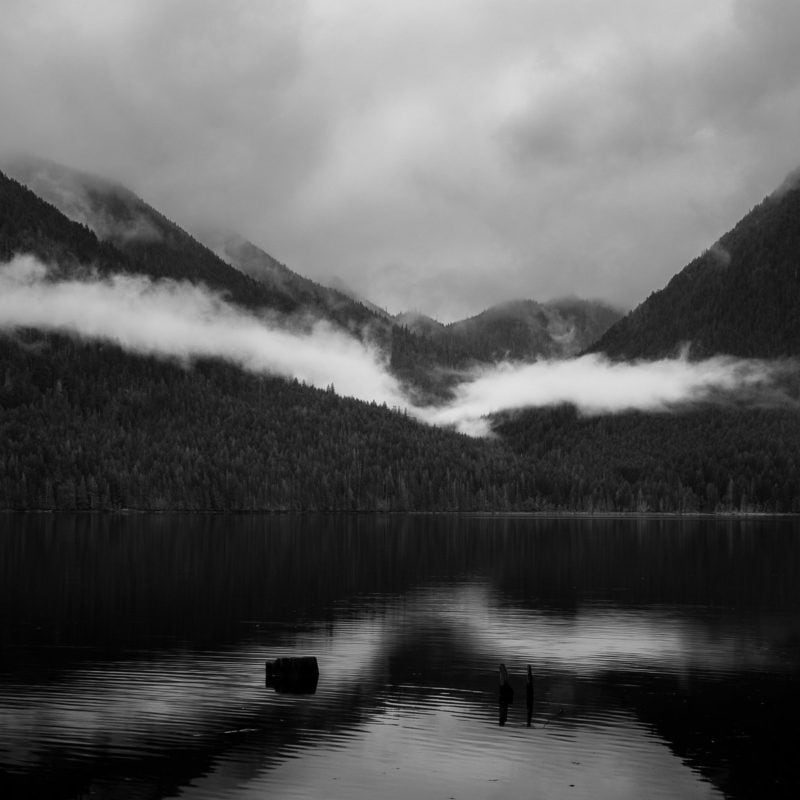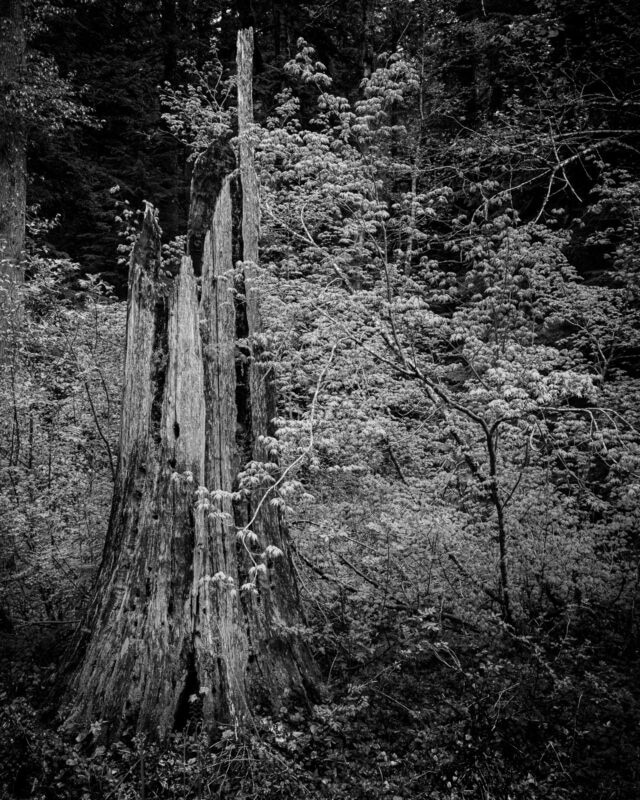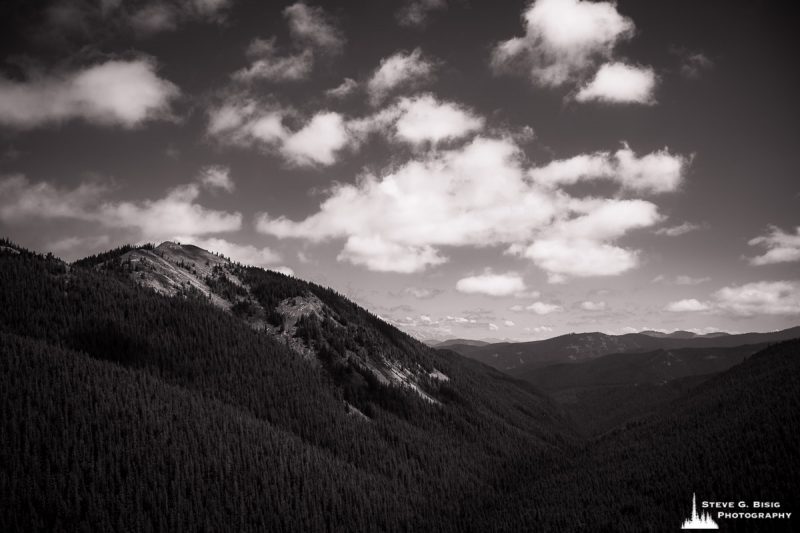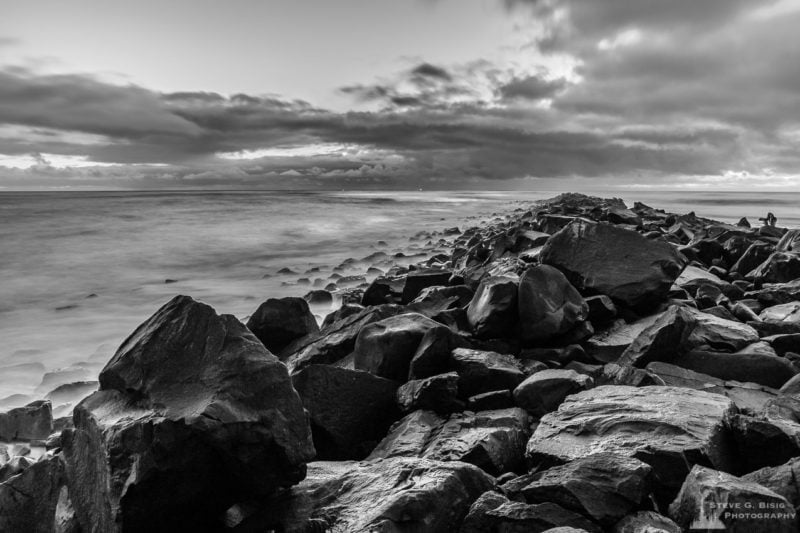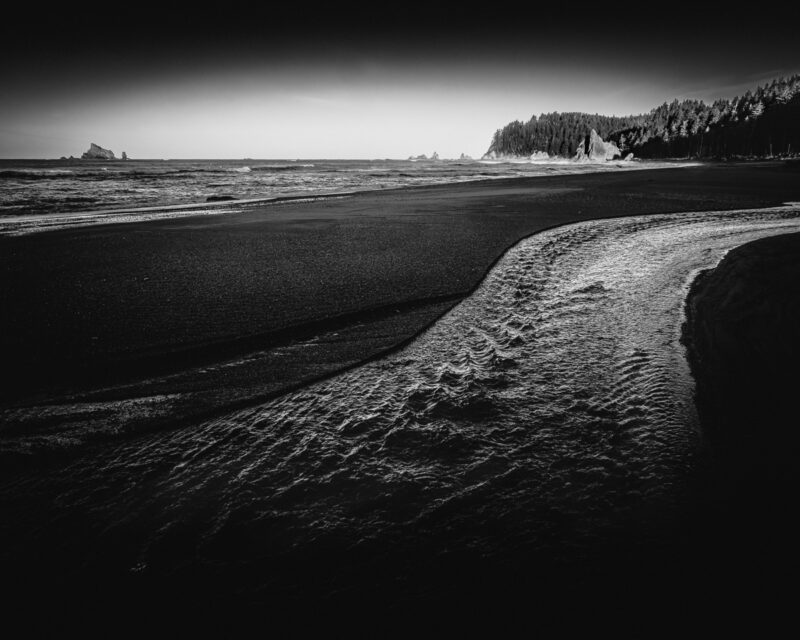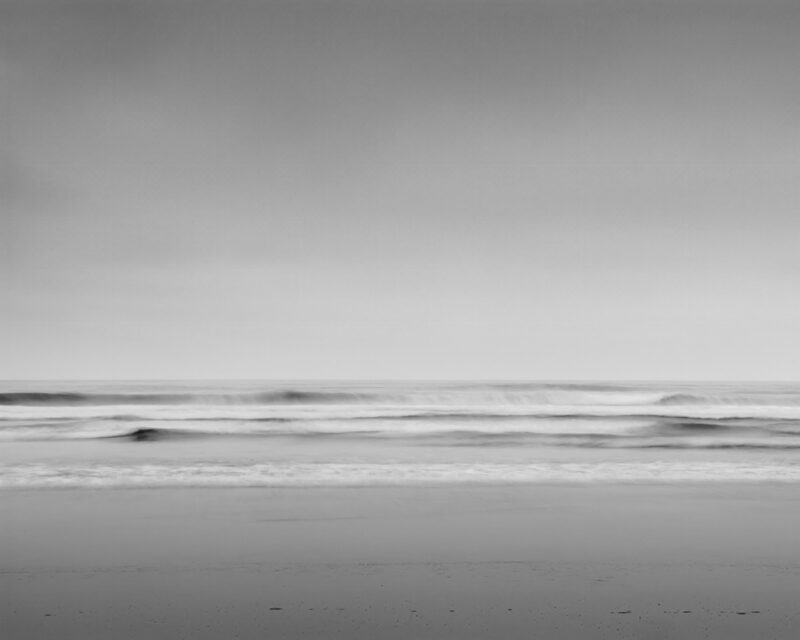In many areas, as summer approaches, the flow from rivers and streams dwindles, becoming a trickle of water later in summer.
In Mt. Rainier National Park of Washington state, the alpine areas are blanketed with snow through early summer. This abundance of snow, melting off as the days warm, provides great streams of water through much of the summer.
With changes in elevation, there will be waterfalls, and Mt Rainier National Park has many beautiful ones to view. Some of my favorite waterfalls are the smaller ones, many visible from the park-access roads.
Late afternoon had rolled around as I turned onto the Stevens Canyon Road in Mt. Rainier National Park. With only a sign identifying Falls Creek, I pulled over to view the waterfall I’ve visited many times. It’s easy to drive right by without stopping.
After a few moments of being present, I started thinking about creating a photograph of this location.
I made several handheld “sketch” photographs. Then I found my desired composition.
Using my tripod, I positioned the camera to encompass the entire waterfall in the frame at 24mm. To keep the tonal ranges within the range of my camera, I excluded the small part of the bright sky visible from my position. Otherwise, the waterfall was in complete shadow.
The darker shades of the trees, rocks, and logs provided a lovely contrast to the white water.
I chose the following settings on my Nikon Z7/Nikkor Z 24-70/4 S lens combination (1/25 second, ISO 400, ƒ/8). This shutter speed allowed me to freeze the motion of the water in the style I prefer.
As part of my capture workflow, I prefer to compose in black and white. This allows me to exclude distractions color can impose on the scene. I like to create photographs with a wide range of tones, from deep blacks to near whites. Adobe Lightroom and Photoshop were used to balance the luminance values of the various elements (water, trees, rocks, logs, and moss) to contrast with the surrounding features.
Thanks for reading.
~Steve


